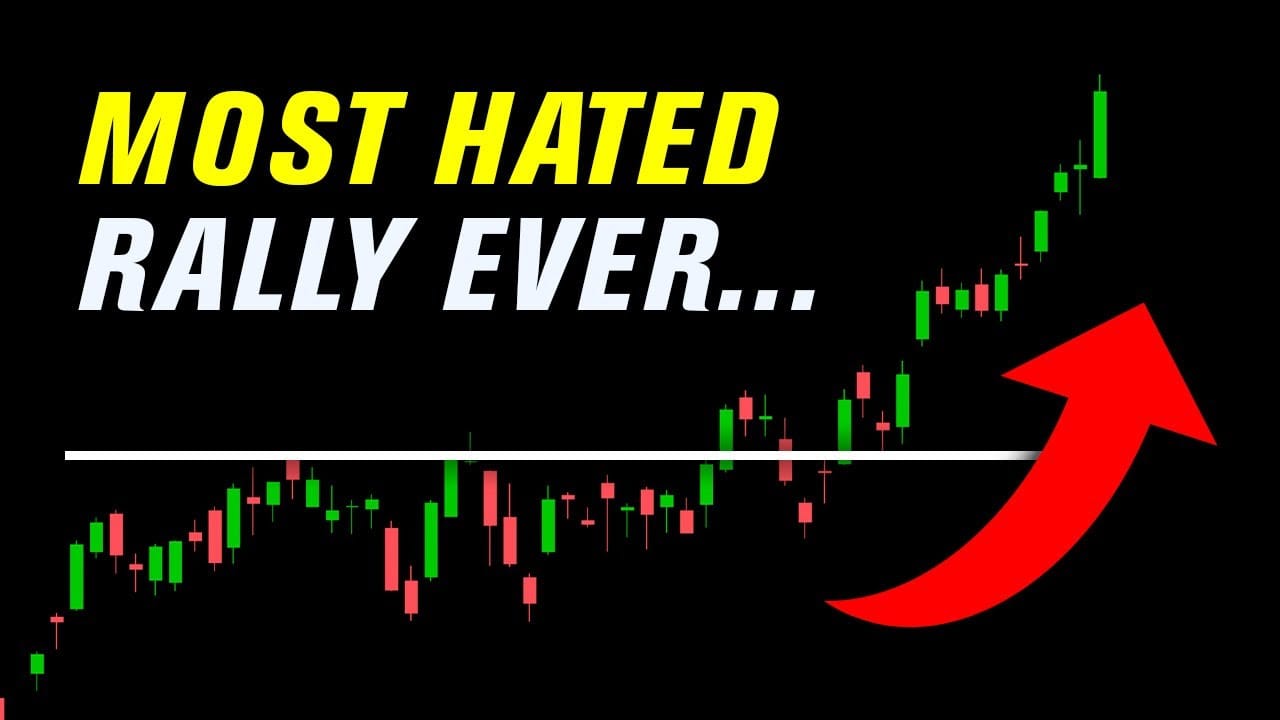Understanding Hated Rallies in Bitcoin, Crypto, and Stock Markets

Tom Lee, co-founder and Head of Research at Fundstrat Global Advisors, recently shared insights with CoinDesk on the phenomenon of "hated rallies" across Bitcoin, cryptocurrency, and stock markets. These rallies, characterized by significant market recoveries met with widespread skepticism, have become a recurring theme in recent years. Despite doubts fueled by major economic disruptions, political biases, and inaccurate recession predictions, these market upswings have consistently defied expectations.
This article explores the nature of hated rallies, their historical context, and the factors driving investor disbelief in the face of robust recoveries.
The Dynamics of Hated Rallies
Hated rallies occur when Bitcoin, crypto, and stock markets experience sharp recoveries that investors, particularly institutional ones, view with deep skepticism. The term encapsulates the disbelief that often accompanies significant bounces following major downturns. Lee emphasized that every major rally since the COVID-19 pandemic has been met with doubt, a pattern driven by prevailing negative narratives. These narratives, ranging from global economic shutdowns to aggressive monetary policies, create an environment where investors struggle to accept the possibility of recovery.
The post-COVID-19 recovery in 2020 serves as a prime example. Following the global economic halt, many investors believed a swift rebound was impossible due to the unprecedented nature of the crisis. Similarly, in 2022, the Federal Reserve’s rapid rate hikes led to a sharp decline in stocks and cryptocurrencies, with institutional investors convinced that a recession was inevitable. More recently, concerns over "tariff Armageddon" in early 2024 sparked fears that markets could not recover without significant liquidity from the Fed. In each case, the subsequent V-shaped recoveries caught skeptics off guard, highlighting a disconnect between market performance and investor sentiment.
🚨 NEW: Tom Lee (@fundstrat / @fs_insight) claims “If you look at political affiliations … 60% of professional stock investors voted for not President Trump. They voted for someone else, and that means the stock market does not believe the Trump agenda.” pic.twitter.com/9N0SkJmidF
— CoinDesk (@CoinDesk) August 2, 2025
Several factors contribute to this pervasive skepticism. Negative economic narratives often dominate discussions, overshadowing potential recovery mechanisms. For instance, during the 2022 rate hikes, investors dismissed the possibility of a market rebound, believing the Fed’s actions would cripple growth. Political affiliations also play a role, with Lee noting that a significant portion of professional investors leaned against policies associated with the Trump administration, further clouding their market outlook. This bias led to doubts about market strength during periods of policy-driven volatility, such as the tariff concerns in 2024 and now also in 2025 under the Trump administration.
The growing influence of economists in macro discussions has also fueled skepticism. Since late 2019, their recession predictions have often missed the mark, with Lee humorously noting that economists have "predicted 13 of the last three recessions." This track record has led investors to overestimate downside risks, causing them to miss out on significant market gains. Despite these doubts, hated rallies have consistently delivered strong recoveries, with markets often reaching new highs and sustaining upward momentum.
The outcome of these rallies underscores their resilience. Once markets break through initial resistance, they tend to "levitate," as Lee described, defying the skepticism that initially suppressed optimism. This pattern is evident in Bitcoin and crypto markets, where sharp recoveries have followed periods of intense doubt, mirroring trends in equities. For instance, Bitcoin’s rebound after the 2022 crypto winter, driven by renewed investor interest and institutional adoption, mirrored the stock market’s recovery from Fed-induced declines. These parallel movements highlight the interconnected nature of modern financial markets.
Investors’ reluctance to embrace these rallies often stems from a combination of cognitive biases and external pressures. The fear of being caught in a false recovery, coupled with political and economic uncertainties, creates a cautious mindset that clashes with market realities. Lee’s analysis suggests that overcoming this skepticism requires a focus on historical patterns and the underlying drivers of market resilience. By recognizing the recurring nature of hated rallies, investors can better position themselves to capitalize on future upswings.
The broader takeaway from Lee’s discussion is the importance of looking beyond prevailing narratives. While economic disruptions and policy shifts can create uncertainty, markets have shown a remarkable ability to adapt and recover. For Bitcoin and crypto investors, this means staying attuned to macroeconomic trends while avoiding the trap of over-relying on pessimistic forecasts, which is something we cover in our monthly Bitcoin and Crypto Insights, which summarizes news, trends, and developments each month so you can stay on top of key market events.

